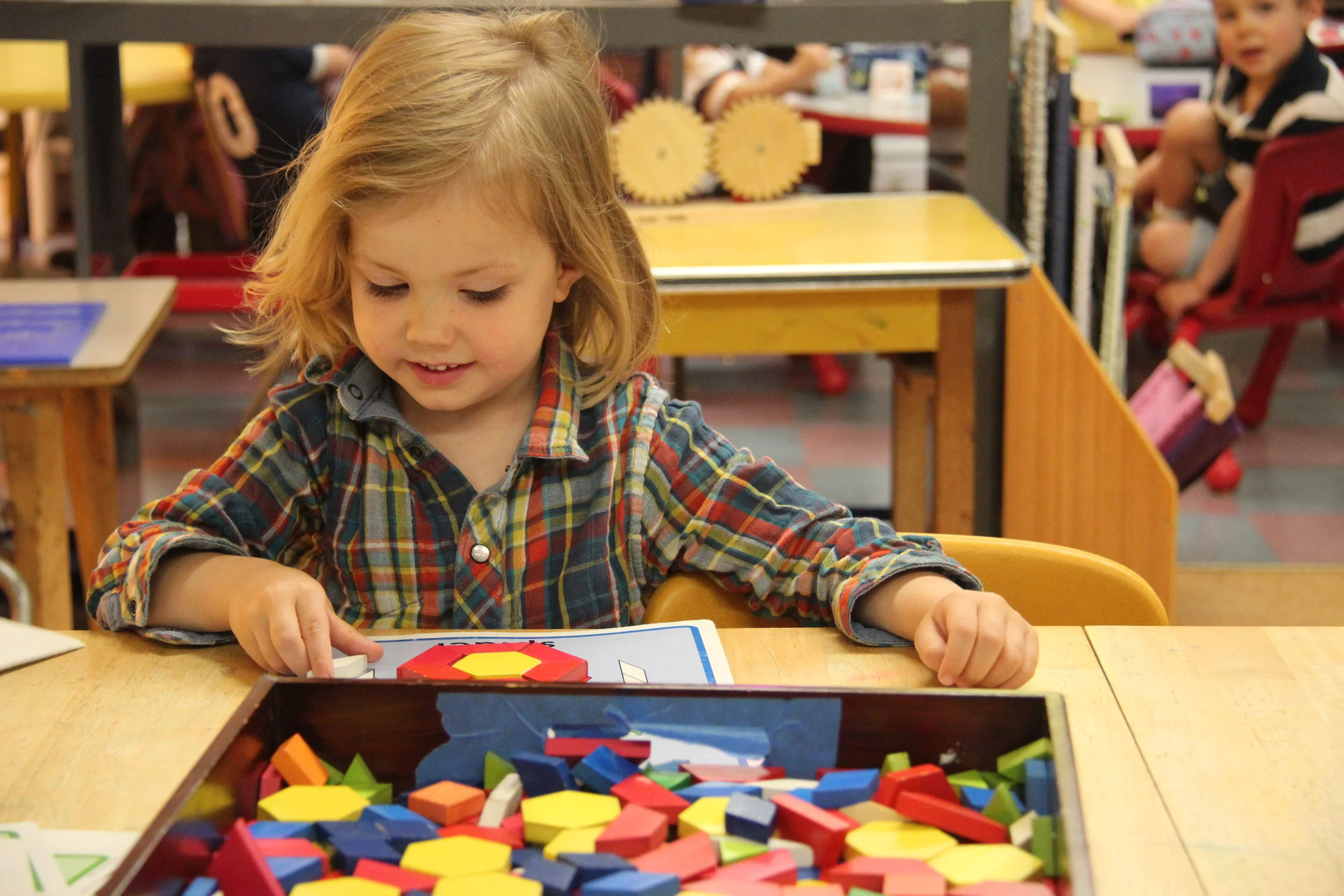Education for the absorbent mind.
The Montessori Method was developed by Dr. Maria Montessori during the early 1900s in Italy. She left her posts as physician and professor to begin work in the “Children’s House” where she took care of 60 young children of working parents.
An Absorbent Mind
After closely observing the children, Dr. Montessori found they interacted and learned from many different aspects their environment.
Her belief was that children possessed an “Absorbent Mind” – an ability to learn, seemingly without effort, through the manipulation of materials in a prepared environment.
From these observations she began constructing materials suited for the children. These materials could be manipulated and worked with, each one isolating a specific sense or targeting a certain skill that worked within a developmental progression.
“The child has a mind able to absorb knowledge.
He has the power to teach himself.”
The freedom to make mistakes, the ability to correct them
Seeing that it was important for the children to be able to choose materials to work with on their own, Dr. Montessori built self-correcting devices directly into the work so that the children could check their own progress. This allowed them the freedom to make mistakes, but also the ability to recognize the mistakes and learn how to correct them.
“Never help a child with a task at which he feels he can succeed.”
Nurturing specific learning sensitivities
While the Montessori Method may differ from one school to another, most reside on the premise that children will learn in a positive, loving and nurturing environment that is prepared with materials suited for their specific learning sensitivities. The children are given the freedom to choose what they want to work on—thus truly nurturing a sincere interest in learning.
In turn, Montessori teachers are trained to assist the children, both individually and through small groups, in the use of the equipment located throughout the classroom. They follow the child’s lead by observing where that child’s interests and needs are, and by helping to guide and nurture them in this development. They are careful not to interrupt the children during work, or to force a lesson beyond the children’s interest. The teachers also set the example for children to respect one another so that they can mutually learn from each other.
“Children become like the things they love.”
